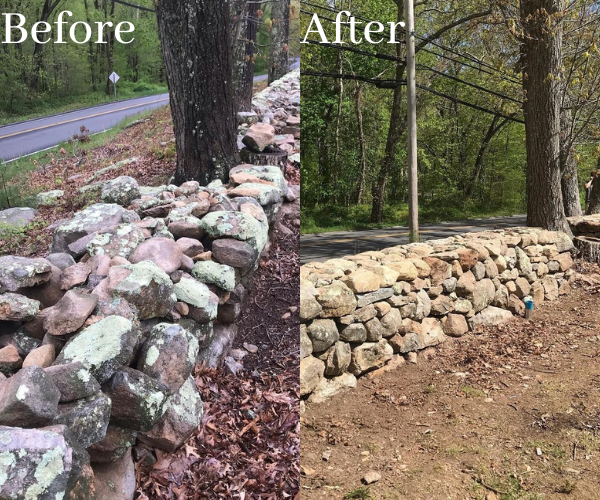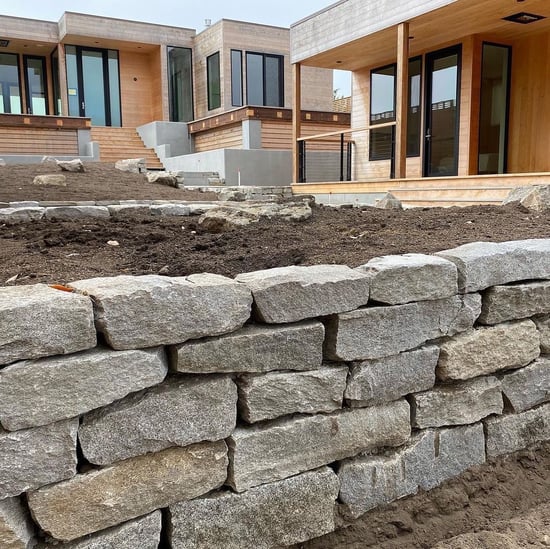Long before landscape design became a focal point for homeowners, stone walls were created to protect borders and prevent unwanted guests during conflict. Since then stone walls using native stone have been used to mark property lines, protect against erosion and sedimentation, and are now used decoratively throughout landscape design projects. To show how some stone walls are built now it is important to know about the different materials that can be used to create these features.
Native Fieldstone Wall Repaired By Stonebearmason & JCrookmasonry
Native Stone
As a New England based company, native stone walls are something we are very familiar with. Even in a short drive around a residential area near our Connecticut facility there will be stone walls like the one featured above. These native stone walls are typically 100's of years old but have become a staple to the property. So much so that homeowners are having them repaired to preserve the native stone wall look while keeping the historical feel of the property. When a lot of the estimated 100,000 miles of stone walls around New England were constructed the modern homes on these properties were not even there. This historical building material is still a popular choice for stone walls in New England and beyond.
Full Bed (Dry Stack)

Harbor Mist Full Bed Ashlar Designed By Skornicka Designs
Unlike the fieldstone material above which are native pieces that are worked on site by a mason, the veneer stone wall projects use material that has been split to specific dimensions. Above the Full Bed material is split to approximate 3"-5" thickness which is also one of the major differences between full bad and thin stone veneer. This discrepancy in thickness makes the full bed material an option for a free standing wall like the Harbor Mist project above. The dry stack terminology is used to describe the pieces being laid on top of each other without the use of mortar as seen in the project below.
Thinstone (With Mortar)
Nutmeg Ridge Mosaic Stone Wall By Soundview Gardens
The newest veneer material which is becoming the most popular choice among stone wall and other natural stone projects is thinstone veneer. Installed here using a mortar joint, this material needs to be adhered to an existing surface and can not be used to create a structural wall on it's own unlike the other two materials.
Along with the style and size differences of these three material options comes other characteristics that affect the durability and structural integrity of your wall. When choosing a material or rebuilding a wall be sure to take location, climate and durability into consideration.




-2.png?width=150&height=150&name=Untitled%20design%20(2)-2.png)
COMMENTS